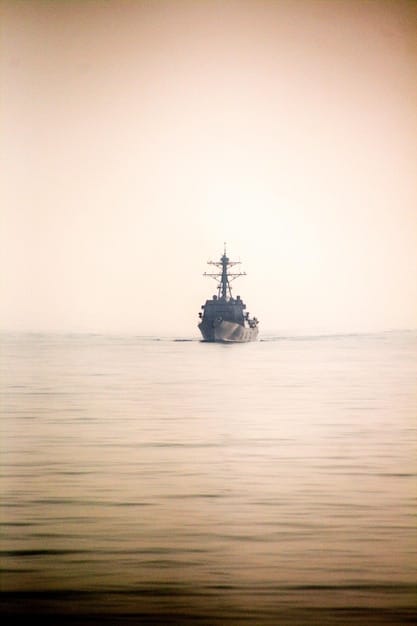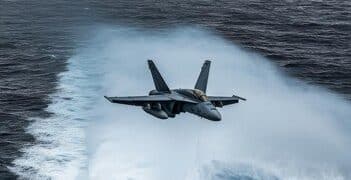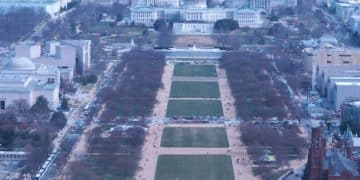US Response to Iran’s Growing Influence in the Middle East

The United States’ response to Iran’s growing influence in the Middle East involves a multifaceted strategy incorporating diplomatic efforts, economic sanctions, military deterrence, and support for regional allies aimed at containing Iran’s expansionist policies.
The escalating influence of Iran in the Middle East presents a complex challenge for the United States. Understanding how will the US respond to the growing influence of Iran in the Middle East? requires examining the multifaceted strategies Washington employs to protect its interests and maintain regional stability.
Understanding Iran’s Influence in the Middle East
Iran’s influence in the Middle East is not a recent phenomenon but has been steadily growing over the past few decades. This expansion is driven by a combination of factors, including political ambition, religious ideology, and strategic opportunism.
Iran exerts its influence through various channels, including supporting proxy groups, engaging in diplomatic initiatives, and leveraging its economic resources. Understanding these mechanisms is crucial to grasping the full extent of Iran’s impact on the region.
Proxy Warfare and Regional Conflicts
One of the primary ways Iran projects power is through proxy groups. These non-state actors, often sharing similar ideological views, serve as extensions of Iranian influence in countries like Lebanon, Syria, Iraq, and Yemen.
By supporting groups like Hezbollah in Lebanon and the Houthis in Yemen, Iran can exert pressure on regional rivals and advance its geopolitical goals without directly engaging in conventional warfare.
- Hezbollah: A dominant political and military force in Lebanon, heavily supported by Iran.
- Houthis: Controlling significant territory in Yemen and engaged in a long-standing conflict with Saudi Arabia.
- Shiite Militias in Iraq: Various armed groups that wield considerable influence in Iraqi politics and security.
- Syrian Regime: Sustained backing of Bashar al-Assad’s government during the Syrian Civil War.
These proxy conflicts often exacerbate sectarian tensions and contribute to prolonged instability in the region.
The economic ties between Iran and countries such as Syria and Iraq also play a role in solidifying its presence.
US Strategic Objectives in the Middle East
The United States has several key strategic objectives in the Middle East that guide its policies and actions. These objectives are designed to protect US interests, maintain regional stability, and address emerging threats.
These goals influence the US approach to Iran and shape the range of possible responses to Tehran’s growing influence. Given the intricate nature of the region, understanding these goals is vital.

Countering Terrorism
Countering terrorism has been a long-standing objective for the United States in the Middle East. This involves working with regional partners to degrade and defeat terrorist organizations like ISIS and al-Qaeda.
The US also seeks to prevent Iran from supporting terrorist groups or engaging in activities that could destabilize the region and enable the rise of extremism.
Ensuring Energy Security
The Middle East is a critical source of global energy supplies, and the United States has an interest in ensuring the free flow of oil and gas. This requires maintaining stability in key producing countries and protecting vital maritime routes.
The US Navy plays a crucial role in patrolling the region’s waterways and deterring threats to energy infrastructure.
- Protecting the Strait of Hormuz: Ensuring unimpeded passage for oil tankers.
- Supporting Stable Energy Producers: Collaborating with countries like Saudi Arabia to maintain production levels.
- Diversifying Energy Sources: Reducing reliance on Middle Eastern oil by promoting alternative sources.
Maintaining a stable energy market is essential for both the US and the global economy.
In addition, the US aims to promote diplomatic solutions to regional conflicts.
Diplomatic and Political Strategies
Diplomacy and political engagement are key components of the US approach to the Middle East. These strategies aim to de-escalate tensions, promote dialogue, and find peaceful resolutions to conflicts.
The US engages in various diplomatic initiatives to achieve these goals, including direct talks, multilateral negotiations, and support for regional mediation efforts. A balanced approach is essential.
Negotiating with Iran
The United States has a long history of negotiating with Iran, albeit often fraught with challenges. The 2015 Iran nuclear deal, formally known as the Joint Comprehensive Plan of Action (JCPOA), is a prominent example of such efforts.
The JCPOA aimed to limit Iran’s nuclear program in exchange for sanctions relief. However, the US withdrawal from the agreement in 2018 under the Trump administration has complicated the situation.
- JCPOA: A landmark agreement to curb Iran’s nuclear ambitions.
- Sanctions Relief: Economic benefits for Iran in exchange for compliance.
- US Withdrawal: The Trump administration’s decision to exit the JCPOA and reimpose sanctions.
Whether the US will return to the JCPOA or pursue a new diplomatic framework remains a key question.
The US also works closely with regional allies to foster stability.

Economic Sanctions and Financial Pressure
Economic sanctions are a frequently used tool in the US approach to Iran. These measures aim to pressure Iran to change its behavior by restricting its access to international markets and financial systems.
Sanctions can target various sectors of the Iranian economy, including oil, banking, and shipping. The goal is to limit Iran’s ability to fund its nuclear program, support proxy groups, and engage in other destabilizing activities.
Types of Sanctions
The United States employs various types of sanctions against Iran, each designed to achieve specific objectives. These sanctions can be unilateral, imposed solely by the US, or multilateral, implemented in coordination with other countries.
Secondary sanctions are particularly powerful, as they penalize foreign entities that do business with Iran, effectively isolating the Iranian economy from the global financial system.
- Unilateral Sanctions: Measures imposed by the US alone.
- Multilateral Sanctions: Actions coordinated with other countries, often through the United Nations.
- Secondary Sanctions: Penalties for foreign entities engaging with Iran.
The effectiveness of sanctions is a subject of ongoing debate, but they remain a central component of the US strategy.
Sanctions can also have unintended consequences, such as harming the Iranian population.
Military Deterrence and Security Alliances
Military deterrence is another critical element of the US strategy in the Middle East. This involves maintaining a strong military presence in the region and signaling a willingness to use force to protect US interests and deter aggression.
The US military presence in the Middle East includes naval forces, air bases, and ground troops. These assets provide a credible deterrent against potential threats, including those posed by Iran and its proxies.
Security Alliances with Regional Partners
The United States has forged strong security alliances with several countries in the Middle East, including Israel, Saudi Arabia, and Jordan. These alliances are designed to enhance regional security and counter Iranian influence.
These alliances involve military cooperation, intelligence sharing, and joint exercises. The US also provides military aid and training to its regional partners to help them defend themselves against external threats.
- Israel: A long-standing strategic partner of the US.
- Saudi Arabia: A key player in regional security and energy markets.
- Jordan: A stable ally in a turbulent region.
These alliances are crucial for maintaining a balance of power in the Middle East.
The US also works to enhance maritime security in the region.
The Future of US-Iran Relations
The future of US-Iran relations remains uncertain. Several factors will shape the trajectory of this relationship in the coming years, including political developments in both countries, regional dynamics, and international negotiations.
Whether the US and Iran can find a way to coexist peacefully or whether tensions will continue to escalate remains to be seen. De-escalation is crucial for regional stability.
Potential Scenarios
Several potential scenarios could unfold in the coming years. These include a return to the JCPOA, a new diplomatic agreement, continued tensions, or even military conflict.
Each scenario carries significant implications for the region and the world. Understanding these possibilities is essential for policymakers and analysts.
- Return to JCPOA: A restoration of the 2015 nuclear deal.
- New Diplomatic Agreement: A broader agreement addressing Iran’s nuclear program, missile development, and regional activities.
- Continued Tensions: A continuation of the current state of affairs, with occasional flare-ups and proxy conflicts.
The choices made by leaders in both Washington and Tehran will ultimately determine the future of this critical relationship.
There is no easy solution, and a nuanced approach is necessary.
| Key Point | Brief Description |
|---|---|
| 🛡️ Military Deterrence | US maintains a strong military presence to deter Iranian aggression. |
| 🤝 Regional Alliances | Strategic partnerships with Israel, Saudi Arabia, and Jordan to counter Iran. |
| sanctions | Economic sanctions pressure Iran to curb its nuclear program and destabilizing activities. |
| diplomacy | Negotiations and political engagement to de-escalate tensions and find peaceful resolutions. |
Frequently Asked Questions
▼
The US employs a multifaceted strategy including diplomatic efforts, economic sanctions, military deterrence, and support for regional allies to counter Iranian influence in the Middle East.
▼
Economic sanctions are used to pressure Iran to change its behavior by restricting its access to international markets and financial systems, limiting its ability to fund destabilizing activities.
▼
Military deterrence involves maintaining a strong military presence in the region to signal a willingness to use force to protect US interests and deter aggression from Iran and its proxies.
▼
The US has strong security alliances with countries like Israel, Saudi Arabia, and Jordan, designed to enhance regional security and counter Iranian influence through military cooperation and intelligence sharing.
▼
The future of US-Iran relations remains uncertain, with potential scenarios ranging from a return to the JCPOA to continued tensions or even military conflict, depending on political developments and regional dynamics.
Conclusion
In conclusion, the US response to Iran’s growing influence in the Middle East is a complex and evolving issue. Balancing strategic objectives with regional dynamics requires a nuanced approach that combines diplomacy, economic pressure, military deterrence, and strong alliances. The future of this relationship will significantly impact the stability of the region and the broader global landscape, demanding careful consideration and adaptive strategies from policymakers.





